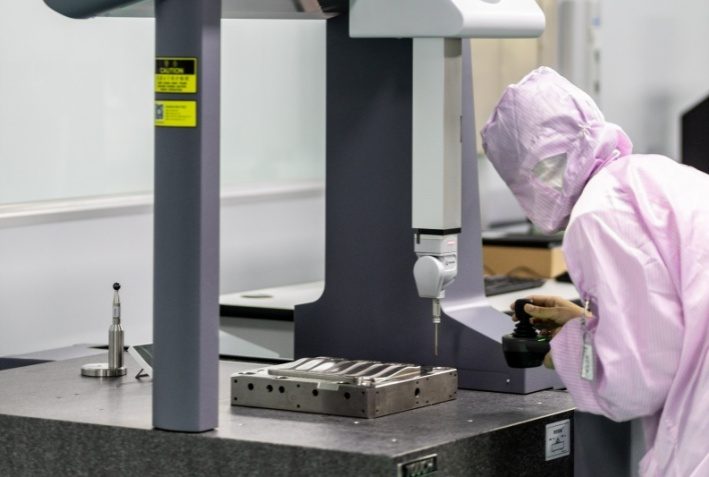Crafting multi-material parts requires a clear, controlled approach—and that’s exactly what the silicone overmolding process and silicone rubber overmolding offer. At Henry Precision, we’ve refined every step of the silicone overmolding process to ensure consistency, from initial design reviews to final delivery. Our silicone rubber overmolding work relies on this structured method, making even complex parts achievable with precision and reliability.
Starting with DFM Analysis: Setting the Foundation
The silicone overmolding process begins with design for manufacturability (DFM) analysis, a critical step to avoid issues later. Our engineering team reviews 2D/3D designs to evaluate bonding strength between the base material (plastic, metal, or glass) and silicone. We check for potential problems like uneven flow, trapped air, or dimensional mismatches—for example, adjusting thin walls where materials meet to improve bonding. We also analyze how materials shrink during cooling, a key factor in silicone overmolding process success. This collaborative review ensures your design is both functional and manufacturable, saving time and reducing costs.
Precision Mold Design: Tools for Success
Next comes mold design, essential for the silicone overmolding process. For silicone rubber overmolding, we often use two-shot molds: first shaping the base material, then injecting silicone over it in one cycle. Our designers optimize these tools with channels for uniform flow and vents to release air. Mold materials depend on production volume: stainless steel for high-volume runs (300,000+ cycles) or durable alloys for prototypes. We adjust dimensions to account for shrinkage, ensuring the final part meets your specs—even for complex geometries like medical seals or automotive components.
Molding and Quality Control: Executing with Precision
During production, the silicone overmolding process relies on controlled parameters. We use advanced machines calibrated for silicone rubber overmolding, with precise temperature, pressure, and speed settings. Medical-grade parts are made in our Class 100K cleanroom to prevent contamination. We monitor variables in real-time, adjusting as needed for consistency. Post-production, every part is inspected: precision measuring for dimensions, peel tests to check bonding, and pressure tests for leaks. For critical applications, we provide detailed reports, ensuring quality transparency.
Supporting Clients Through Every Stage
Our commitment to the silicone overmolding process extends beyond production. We offer technical support, from material selection to troubleshooting. If designs change, we revisit DFM and mold design to integrate updates smoothly with silicone rubber overmolding. We also guide post-processing, like surface treatments, to meet final requirements. This end-to-end support ensures your parts exceed expectations.
Conclusion
The silicone overmolding process and silicone rubber overmolding thrive on structure, precision, and collaboration. At Henry Precision, our step-by-step approach—from DFM analysis to production and inspection—delivers reliable, consistent parts. Whether for medical devices, automotive components, or consumer products, trust our expertise to turn your design into a high-quality reality.


